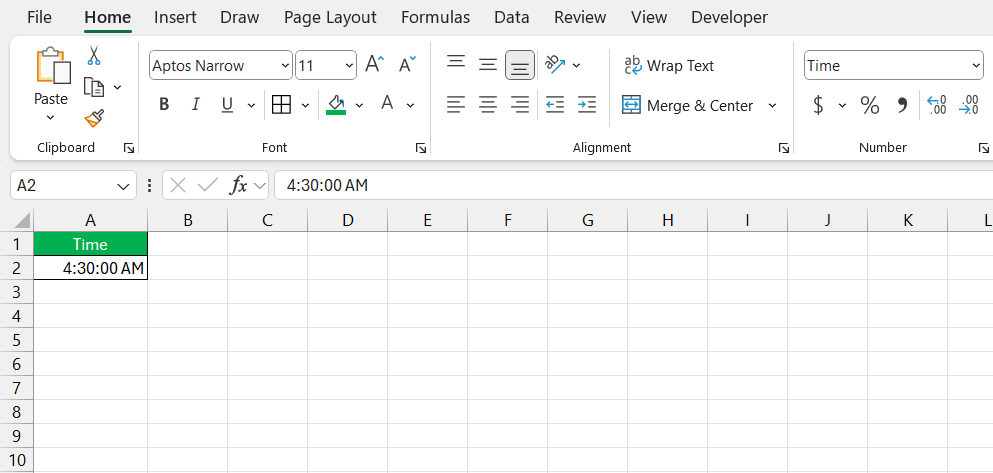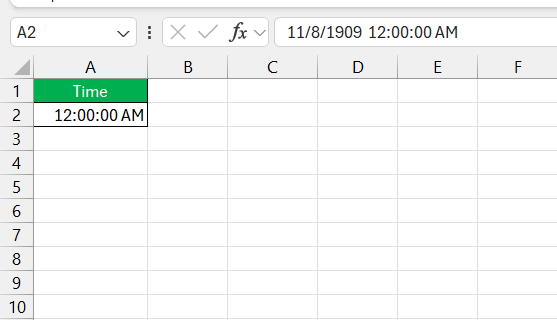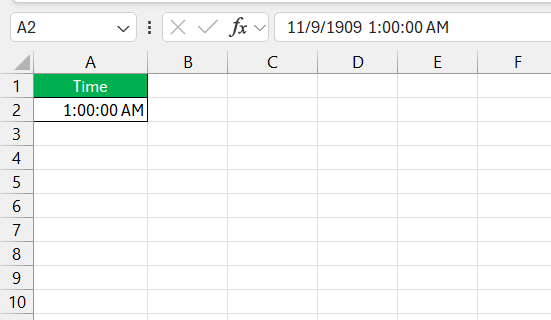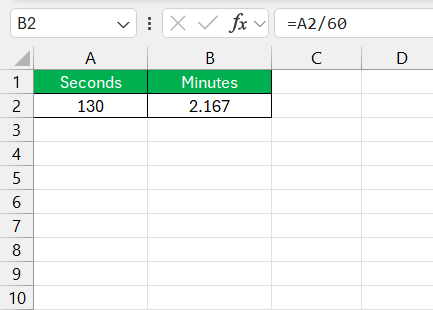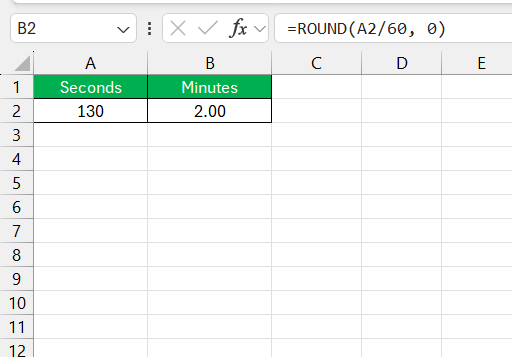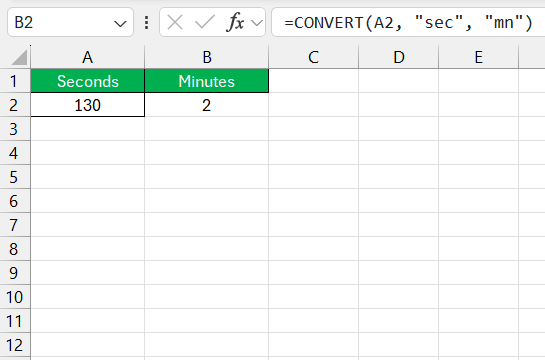Excel is a powerful tool for managing and analyzing data, including time-related data. One common task is to convert seconds to minutes for clearer analysis or reporting. This article will guide you through several methods to perform this conversion in Excel.
Key Takeaways:
- Understanding Time Conversion in Excel: Excel treats time as a fraction of a day and how this principle applies to converting seconds to minutes.
- Methods for Conversion: The different methods, including simple division and using the CONVERT function, can be used to transform seconds into minutes.
- Practical Applications: This knowledge will help you in various scenarios, such as analyzing call center logs or tracking sports performance, where converting seconds to minutes simplifies data analysis.
- Formatting Time Values: Properly formatting time values ensures that your conversions are accurate and visually clear in your spreadsheets.
second to
Table of Contents
Introduction to Time Conversion in Excel
Why Excel Users Need to Convert Seconds to Minutes
Excel isn’t just a space for crunching numbers; it’s a hub for time management. Imagine dealing with data where seconds tick away into minutes and need conversion for clear analysis or reporting. This is where Excel comes in handy, as it makes these conversions straightforward, saving me time and increasing accuracy in time-sensitive documents.
Common Scenarios Requiring Time Conversion
As a spreadsheet warrior, I often face situations where converting time from seconds to minutes can clear up data clutter. For example, when I’m analyzing call center operations, I’m likely to get time logs in seconds. Or perhaps I’m a sports coach tracking performance in seconds but need minutes for ease of understanding.
In project management, I may need to convert task durations for better scheduling. These scenarios are just the tip of the iceberg when it comes to the everyday utility of time conversions in Excel.
Understanding Time Values in Excel
The Basics of Excel Time Format
Excel treats time as a fraction of a day. Hence, one hour is 1/24, a minute is 1/1440, and a second is 1/86400. Understanding this underlying principle is key to mastering time calculations. When I enter a time value, Excel automatically formats it as hh:mm:ss if I include colons.
To ensure my times are recognized correctly, it’s essential to familiarize myself with the standard time formats or customize my own.
How Excel Handles Seconds, Minutes, and Hours
In Excel, the seconds, minutes, and hours are components that work together seamlessly. When I enter numbers into a cell, Excel can interpret these as different fractions of a day. For example, entering “3600” into a cell and formatting it as [h]:mm:ss displays “12:00:00,”.
To display “1:00:00,” you would need to add 1/24 i.e. 1 hour to 3600 into the cell, as this represents the fraction of a day equivalent to 3,601.04167 (or 1 hour).
This functionality allows me to effortlessly switch between units of time, making it a breeze to compute durations, sum up time spans, or perform any other time-related calculations.
Step-by-Step Guide to Convert Seconds to Minutes
Method 1 – Using Simple Division
Time to turn seconds into minutes? It’s just a quick division away. Just enter the number of seconds in a cell and divide by 60 in a neighboring cell by using the formula =A2/60 (assuming the seconds are in cell A2).
Excel does the math and presents you with the time in minutes as a decimal. To get rid of any decimals and keep things tidy, you could bring the ROUND function into play, like so: =ROUND(A2/60, 0) to round the result to the nearest whole number.
Method 2 – Applying the CONVERT Function
For a more elegant approach, you can leverage Excel’s built-in CONVERT function. This function is expressly designed for such mathematical metamorphoses. To change seconds to minutes, you’d use =CONVERT(A2, "sec", "mn"). The first argument is the cell with your seconds, the second is the current unit, and the third is the desired unit.
It’s a clean, straightforward method that leaves no room for confusion, ensuring your data stays precise and comprehensible.
Tips for Working with Time in Excel
- Use Consistent Units: Ensure that all time data is in consistent units to avoid errors in calculations.
- Check Formatting: Proper formatting helps in accurately displaying time values.
- Leverage Built-in Functions: Functions like
CONVERTandTEXTcan simplify time conversions and formatting.
FAQ Section
What is the formula for converting seconds to minutes in Excel?
The basic formula for converting seconds to minutes in Excel is to divide the number of seconds by 60. In a cell, you’d enter =A1/60 for a value in cell A1. If you prefer to work with whole numbers, try rounding the result with =ROUND(A1/60, 0). For a precision touch, use =CONVERT(A1, "sec", "mn") to accurately translate seconds into minutes without any fuss.
How do I format the minutes after conversion?
After converting seconds to minutes, format the result by right-clicking the cell, selecting ‘Format Cells,’ and choosing your desired time format. If you’re working with only minutes and seconds, select ‘Custom’ and enter ‘mm:ss’ to avoid hours showing up. This way, your data will display in an easily digestible time format, keeping your spreadsheet clean and interpretable.
Can I convert time values that are greater than 24 hours?
Absolutely! To handle time values over 24 hours, opt for a custom Excel format. Right-click on the cell, choose ‘Format Cells,’ then select ‘Custom.’ Type in ‘[h]:mm:ss’ for the format code, and voilà, Excel keeps count of all those hours without defaulting back to zero after every day-cycle. This format is perfect for projects or activities spanning longer durations.
What should I do if the seconds value is a negative number?
If your seconds value is negative, still use the same division technique to convert it into minutes by dividing by 60. In Excel, to have a negative result displayed properly, ensure the 1904 date system is enabled, which supports negative times. Otherwise, customize the cell format to display the negative sign correctly using something like [-]h:mm:ss.
How can I convert minutes back to seconds in Excel?
To flip minutes back into seconds in Excel, multiply them by 60. Just enter =A2*60 in a cell (with A2 containing the minutes). This conversion is simple math, considering there are 60 seconds in a minute. Excel does the rest, giving you the equivalent value in seconds. Whether for quick recalculations or reversing a previous conversion, this method is efficient and accurate.
John Michaloudis is a former accountant and finance analyst at General Electric, a Microsoft MVP since 2020, an Amazon #1 bestselling author of 4 Microsoft Excel books and teacher of Microsoft Excel & Office over at his flagship MyExcelOnline Academy Online Course.

